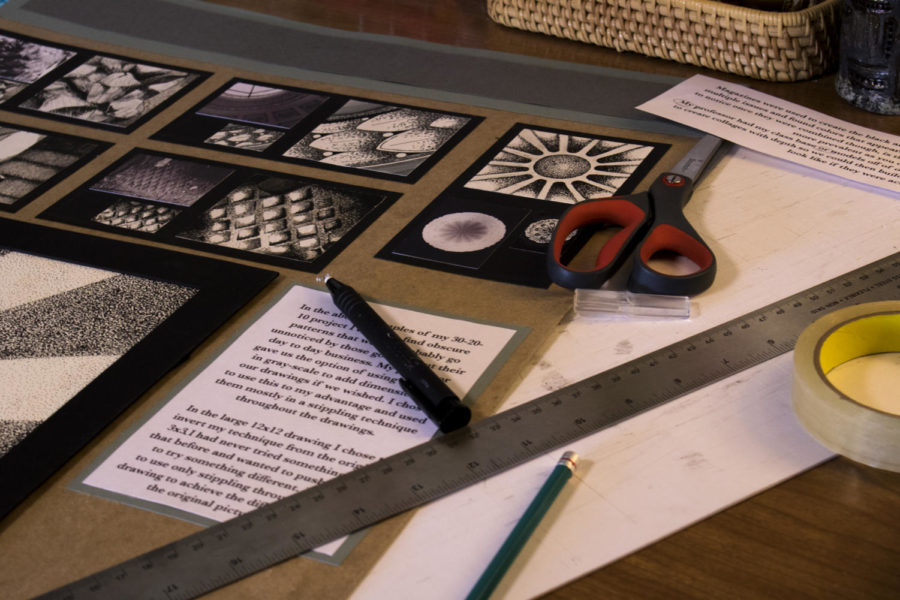Design students share advice on succeeding in design program
February 20, 2020
There are many things students in design can do to prepare themselves for the real world outside of university, and building a portfolio throughout their years of experience in and out of school is one of the pivotal assets a student can have to present to potential employers.
For some majors in the College of Design, creating a portfolio of their best work is an essential, required item that students must turn in to have a chance at being accepted into the design program for further studies.
Timothy Van Rheenen, senior in interdisciplinary design, shared his experience with design.
“I’ve always been creative, and I chose interdisciplinary specifically because I didn’t know what realm of design I wanted to be in,” Van Rheenen said. “I love architecture, I love interior design, I love graphic design and this is the opportunity to do kind of all of them. I love being creative.”
One day, Van Rheenen said he plans on working on a big design for a big city like New York City. He said he is “shooting high.” When it comes to portfolios, he said his is a mixture of class work and independent projects.
“My portfolio consists of some work from class but also some from professional experience that I had in an internship over the summer,” Van Rheenen said. “So I took a lot of work from that to kind of put in real-world work for them to look at.”
Jack Strait, junior in architecture-professional degree, is a second year architecture student in the design program. He said the portfolio building process was actually quite simple after selecting all of his best work to include in the final presentation.
“The portfolio was due more or less at the end of the school year […],” Strait said. “At the Bookstore I was able to buy a kit where they give you all the pages you can use and also the material to use for the cover. I was just able to cut out all my work and resize images that I didn’t think were the right size […] It was kind of like scrapbooking.”
Madison Boyle is a freshman in design, and is currently an open major. She finds herself in the world of design because of its presence in her life before college.
“My mom’s an artist and my grandma’s an artist, and it sort of runs in the family,” Boyle said. “That’s been my primary skill for most of my life.”
In her design classes, Boyle found professors’ fellowship with the process of developing a portfolio as a freshman typically differed from class to class.
“It really depends,” Boyle said. “My drawings teacher didn’t say anything about it, but my mixed media professor mentions it all the time, so it really depends on the professor.”
In the best interest of upcoming design students, Van Rheenen sends his advice in succeeding in the field of design.
“Push yourself,” Van Rheenen said. “Don’t be afraid to try something new because it’s gonna pay off more often than not, and always step outside your comfort zone because it will teach you a lot more than staying inside your box.”
Van Rheenen also said there are a lot of connections to be made within the College of Design, because the small size of the college makes it such a tight-knit community.
In relation to this comment, Skyler Deperry, senior in community and regional planning, said to “step out of your comfort zone, do a lot of things. It will help with resumes and life experience.”

















